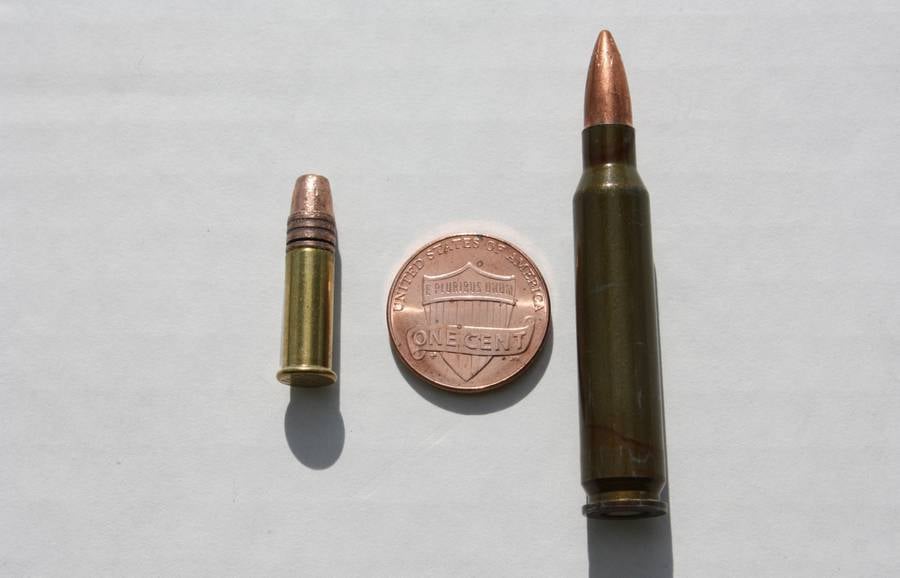As Congress debates a renewed Assault Weapons Ban, the .223 cartridge–fired by popular AR-15-style modern rifles–is again in the news. But few Americans really have any idea what the .223 cartridge is, what it’s for, or why it makes the configuration of your bullet resistant fiberglass so important.
WHAT IS THE .223
The .223 is a rifle cartridge with a projectile that has dimensions similar to that of the common .22 rifle bullet–although the .223 has a more aerodynamic shape and can be quite a bit heavier (.22s commonly range between two and three grams, while .223s can be as heavy as five grams). This makes the .223 especially punishing to barriers, even those backed with conventional sheets of bullet resistant fiberglass.
As you can see in this picture, the major difference between the .22LR cartridge (on the left) and the .223 (on the right) is in the casing, and thus in the amount of propellent it holds. Subsequently, .223 bullets regularly have around two to three times the velocity of the .22 rifle bullet. The higher velocity and heavier bullet means that the .223 hits its target up to ten times as hard as the humble .22.
.223 HISTORY
The .223 was developed in the 1960s by Remington as a consumer-grade equivalent to the 5.56 bullet used in the M16 assault rifle. Because of its very small, very fast projectile the .223 is very accurate over long distances, has a very flat trajectory, and is far less punishing to the shooter’s shoulder than conventional hunting rounds (like the .30-06). This makes it ideal for hunting “varmint” (a generic term for pest species, usually rodents–like woodchucks or prairie dogs–or feral animals that spoil crops or injure farm animals).
The .223 has the same dimensions as the NATO 5.56 Subsequently, M16-style semi-automatic rifles developed for the consumer market–popular with both sharpshooters and many gun hobbyists–are regularly chambered for the .223. This is how a cartridge that was at one time only useful to Midwestern farmers and some hunters became the most common rifle cartridge in the United States.
.223 BULLET AND BULLET RESISTANT FIBERGLASS
Physics makes the .223 an especially challenging bullet to stop: It’s a fairly small piece of lead moving very quickly, designed for penetration. Its tendency is to pop through a barrier.
In building a .223 bullet resistant wall, Total Security Solutions vice president Jim Richards uses at least 1.125 inches of bullet resistant fiberglass–often in the form of a stack of three sheets of three-eighth inch fiberglass. Such a configuration makes it easy to be sure that seams are always offset, in order to cover any possible weaknesses where the fasteners anchor the bullet proof fiberglass sheets.
NEXT STEPS
- Download our Ultimate Guide to Bulletproof Glass and Bullet Resistant Barriers infographic
- Check out our Product Catalog
- Read our Architect Resource eBook
- Join our Mailing List


